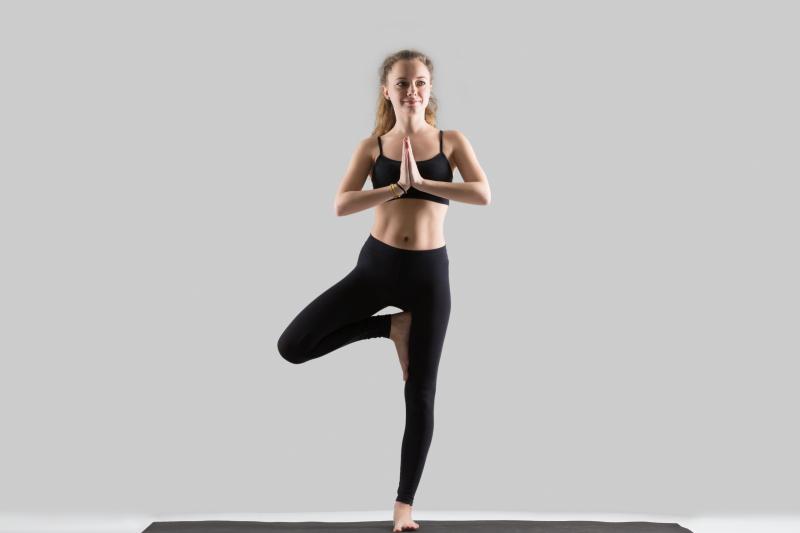Yoga Asanas for Beginners: Simple Poses to Start Your Journey

Yoga is an ancient practice that brings together the mind and body, offering numerous physical and mental benefits. Whether you're looking to improve your flexibility, reduce stress, or build strength, yoga can be a great addition to your daily routine. For beginners, starting with simple yoga poses (called asanas) is the best way to ease into this practice. In this article, we’ll cover a few basic yoga asanas for beginners that are easy to learn and suitable for anyone.
1. Mountain Pose (Tadasana)
Mountain pose is the foundation for many standing yoga poses. It looks simple, but it helps improve posture and balance.
- How to do it: Stand tall with your feet together, arms by your sides, and your weight evenly distributed on both feet. Engage your thighs, lift your chest, and press your shoulders back. Hold for a few breaths.
- Benefits: This pose helps improve posture, balance, and body awareness.
2. Downward-Facing Dog (Adho Mukha Svanasana)
Downward-facing dog is one of the most recognized yoga poses and is great for stretching the whole body.
- How to do it: Start on your hands and knees, then lift your hips toward the ceiling, forming an upside-down "V" shape with your body. Keep your hands shoulder-width apart, and your feet hip-width apart. Try to press your heels toward the floor and relax your neck. Hold for a few breaths.
- Benefits: This pose stretches the hamstrings, calves, and shoulders, and strengthens the arms and legs.
3. Child’s Pose (Balasana)
Child’s pose is a gentle resting pose that helps to stretch the back and calm the mind.
- How to do it: Kneel on the floor with your big toes touching and your knees apart. Sit back on your heels and stretch your arms forward on the floor, lowering your forehead to the mat. Breathe deeply and relax.
- Benefits: This pose gently stretches the hips, thighs, and back while relieving tension and stress.
4. Cat-Cow Pose (Marjaryasana-Bitilasana)
The cat-cow pose is a great way to warm up the spine and improve flexibility.
- How to do it: Start on your hands and knees in a tabletop position. As you inhale, arch your back (cow pose), lifting your head and tailbone toward the ceiling. As you exhale, round your back (cat pose), tucking your chin and tailbone. Move between these two poses with your breath.
- Benefits: This pose stretches the spine, improves flexibility, and releases tension in the neck and back.
5. Tree Pose (Vrksasana)
Tree pose is a balancing pose that strengthens your legs and core while improving focus.
- How to do it: Stand tall with your feet together. Shift your weight onto your left foot and place the sole of your right foot on your left inner thigh (or lower leg if that’s more comfortable). Bring your hands together in front of your chest, or reach them overhead for a deeper stretch. Hold for a few breaths, then switch sides.
- Benefits: This pose improves balance, strengthens the legs, and enhances concentration.
6. Seated Forward Bend (Paschimottanasana)
Seated forward bend is a calming pose that stretches the back and hamstrings.
- How to do it: Sit on the floor with your legs straight in front of you. Inhale and lengthen your spine, then exhale as you fold forward from your hips, reaching for your feet. Hold for several breaths, allowing your body to relax.
- Benefits: This pose stretches the spine, shoulders, and hamstrings, while calming the mind.
7. Bridge Pose (Setu Bandhasana)
Bridge pose is a gentle backbend that strengthens the back, glutes, and legs.
- How to do it: Lie on your back with your knees bent and your feet hip-width apart. Press your feet into the floor as you lift your hips toward the ceiling. Keep your arms by your sides or clasp them underneath your body. Hold for a few breaths, then slowly lower down.
- Benefits: This pose strengthens the legs, back, and core, while opening the chest and stretching the spine.
8. Corpse Pose (Savasana)
Savasana, a key aspect of Classical Yoga, is the final relaxation pose that allows the body and mind to fully absorb the benefits of the practice.
- How to do it: Lie flat on your back with your arms at your sides, palms facing up. Close your eyes and breathe deeply, allowing your whole body to relax. Stay in this pose for a few minutes to feel completely at ease.
- Benefits: This pose helps relax the body, reduces stress, and promotes a sense of peace.
Conclusion
Starting your yoga journey doesn’t have to be complicated. These beginner-friendly yoga asanas are simple to learn and can be practiced at home. Remember to focus on your breath, move at your own pace, and listen to your body. As you get more comfortable, you can gradually explore more advanced poses and deepen your practice. Yoga, is not just about flexibility; it’s about finding balance, peace, and strength in both your body and mind!
Post Your Ad Here
Comments